When trainers started using the word “broke” hundreds of years ago, they meant that they’d broken a horse’s spirit. As horsemanship has evolved, we’ve learned that “breaking” a horse’s spirit isn’t the goal. No—I want a horse that’s still got his spirit, enthusiasm, and mojo.
Instead of a broke horse, I’ll used the phrase “well-trained.” It doesn’t roll off the tongue or make for as catchy a headline, but it more accurately reflects how well we’ve done our jobs as horsemen and -women. And whether we’re professional trainers or weekend warriors, we should be able to train our horses to possess these five critical elements of a well-trained horse in order to maximize our success and safety in the saddle. Plus, a horse that can manage these five skills is better prepared for life with a future owner, insuring longevity in his career. And while these skills might seem obvious at first, they provide the blueprint for every maneuver we ask of our horses—be it on a trail through rugged terrain, in the arena navigating a complex pattern, or down the fence chasing a cow.
These basic elements can start as simple fundamentals but are definitely the foundation for greater maneuvers and components to a well-trained horse for any purpose.
[MORE WITH AL: THE LOST ART OF STANDING TIED]
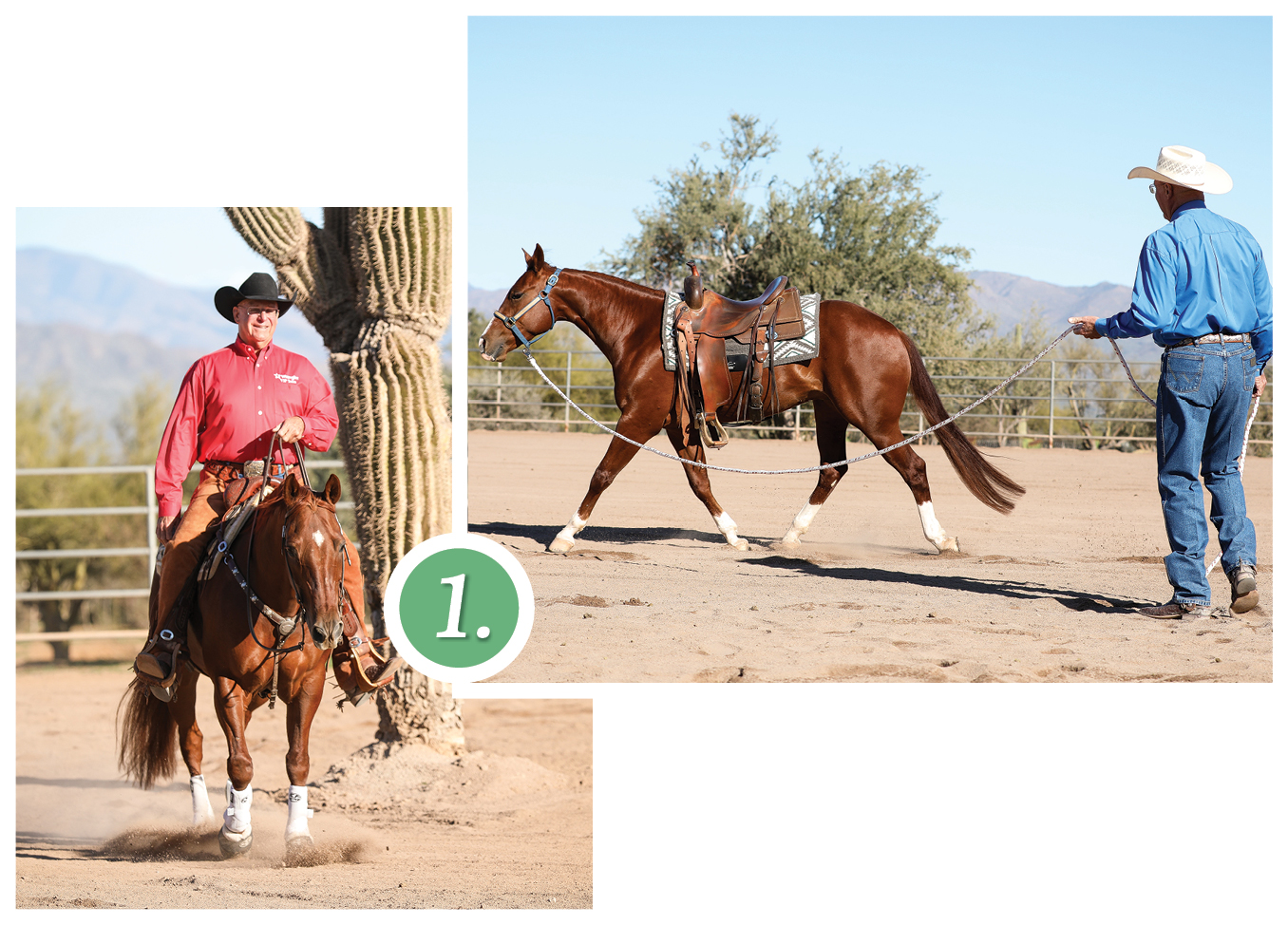
1. Go forward willingly.
A well-trained horse should go forward easily, willingly, and happily. I see a lot of horses who can’t go forward in a straight line. They wiggle their tail, pin their ears, or cock their head. Your horse should go forward in a straight line, with his body in alignment. He shouldn’t be swinging his rear end, and if he’s arched one way or the other, it should be in a form of collection. He absolutely shouldn’t be tossing his head.
Make It Happen:
The safest way to get a horse to ride is to go forward. It’s a really scary situation if you get on and your horse goes backward or sideways.
Therefore, when starting a horse with groundwork, instill in him what a cluck or smooch means. In the round pen, smooch to him and tap him with a whip, so by the time you want to put that first ride on him, he has a good idea about what the smooch means. When I first cheek a colt and get on for the first time, I immediately bend him and smooch to ask for forward motion. I carry that smooch throughout a horse’s training.
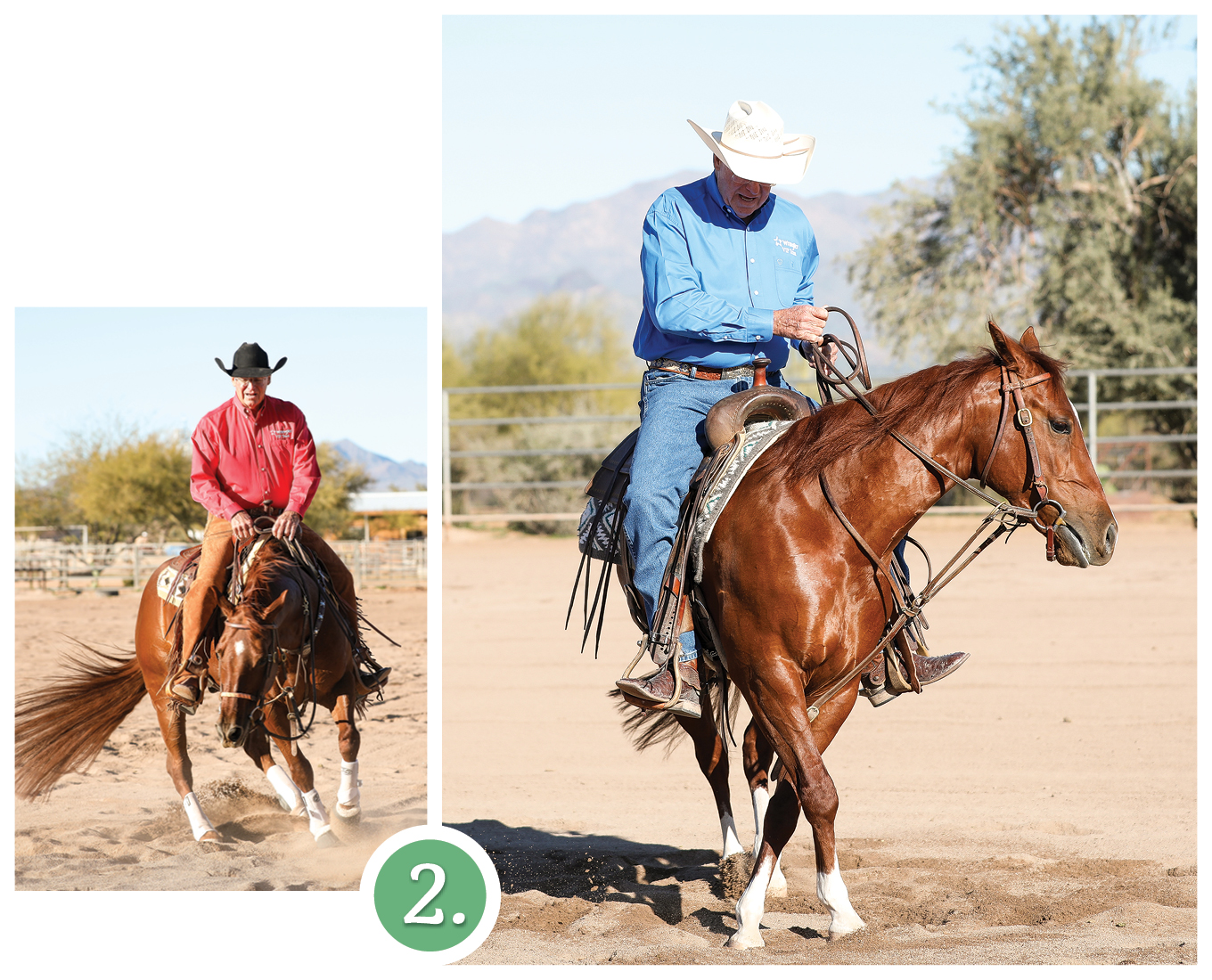
2. Turn smoothly.
Every horse should be able to turn right and left smoothly and equally, to the degree that fits whatever you’re going to do. If you’re trail riding, he doesn’t need to spin fast. But he needs to turn smoothly and not fumble around or toss his head. If he’s going to be a reiner or cow horse, he’s got to have a foot pattern and the correct step in the turn.
I always teach that horses should work like a three-wheel cart. There’s one loose wheel on one end and two fixed wheels on the back. The front turns and the back stands still. After you have your horse going forward and walking circles, you have to teach him to hold his hips still as his front turns.
Make It Happen:
I teach a one, two, three method to turning. One: Sit still, reach down the inside rein, take the slack out and start the bend of the head. Two: Take the outside rein onto the neck and move the shoulder in the direction of the nose. Three: Use your outside leg and cluck to encourage that motion.
Try some products Al likes; Professional’s Choice, Farnam, Wrangler, Justin, and Purina.
Products we feature have been selected by our editorial staff. If you make a purchase using the links included, we may earn a commission. For more information click here.
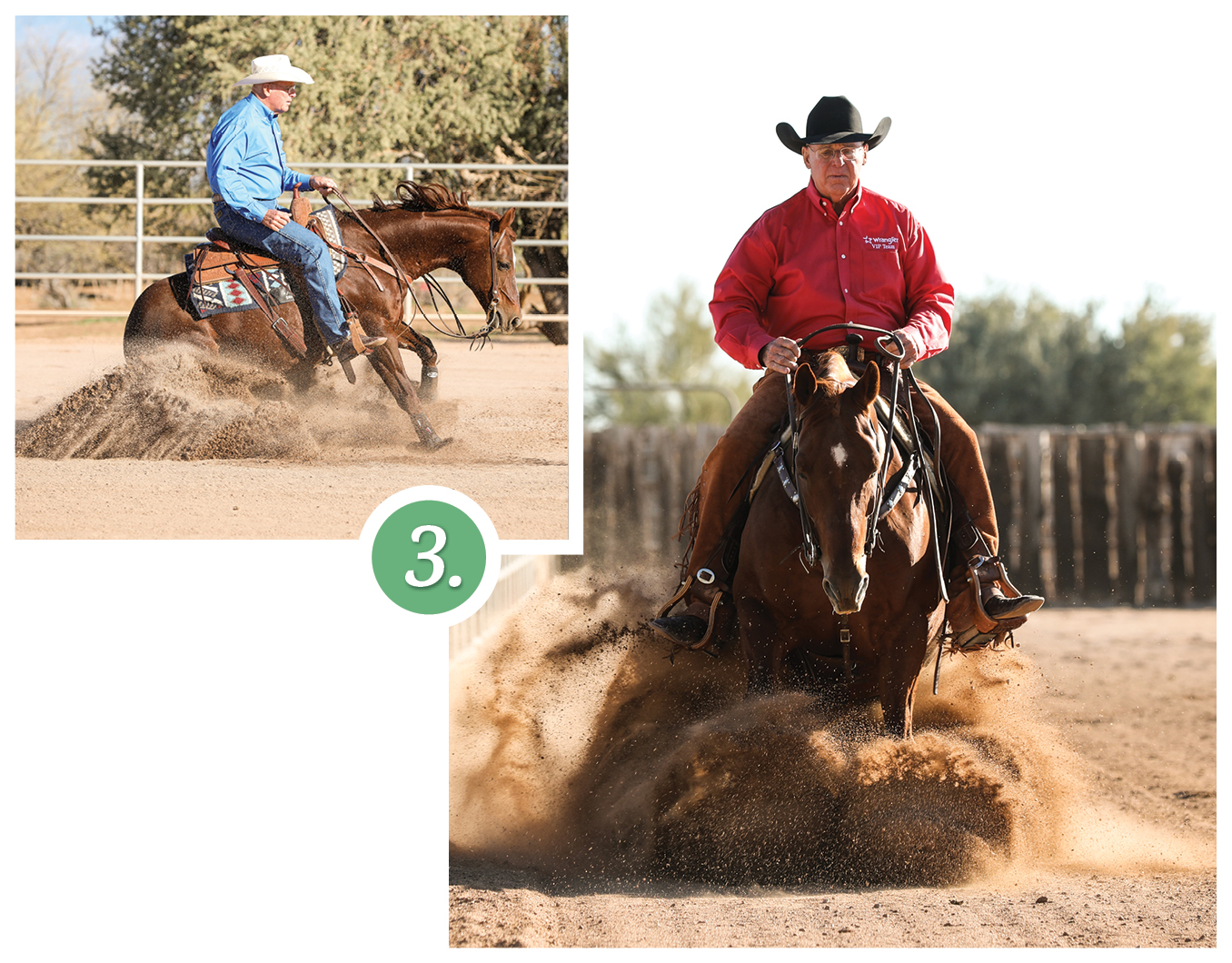
3. Whoa.
The next thing is that he ought to stop. He should stop when you say whoa, and when you pull on the reins. You should ride forward with body rhythm, and when you quit moving your body, he ought to stop. And, importantly, he needs to stop on his hocks, not on his front end.
Make It Happen:
What’s interesting about the stop is that from the beginning when you put a halter on a baby, you’re teaching him to go, turn, and stop. You’ve used the word whoa along the way. You’ve taught him when you quit moving on the ground, he should quit moving. That means he should know the word whoa. You’ve said it in the stall when you’ve caught him, led him, and longed him.
There’s a process I go through on a horse’s back that’s very important and builds off of what your horse knows on the ground. If you stick with my theory that what you’re trying to do is not to create any defense mechanisms, you know not to go to jerking one into the ground. When my horse goes forward and I want to stop, the first thing I do is quit riding. I quit moving my body and my legs, I sit deep in the saddle, and I say the word whoa. Then I pick up on the reins. The greener the horse is, the more I’ll pick up on one rein to turn rather than pull straight back and try to stop him straight. I want no unrequested forward motion. When I teach a horse to stop going forward, he can go right, left, stop, or back up. But no longer can he keep going forward. That way, you aren’t roughing your horse’s mouth around trying to stop him in a straight line.
I use the fence a lot in teaching the whoa, too. I’ll be trotting straight down the fence, and I’ll reach down my rein and bend my horse into the fence. I let the fence help him learn that there’s a barrier. The softer the front end in the stop, the better the back end works. If you rough the front end up when you stop, it’ll drop into the ground. Teaching a horse to stop the way I’ve described should keep the hind end the main force.
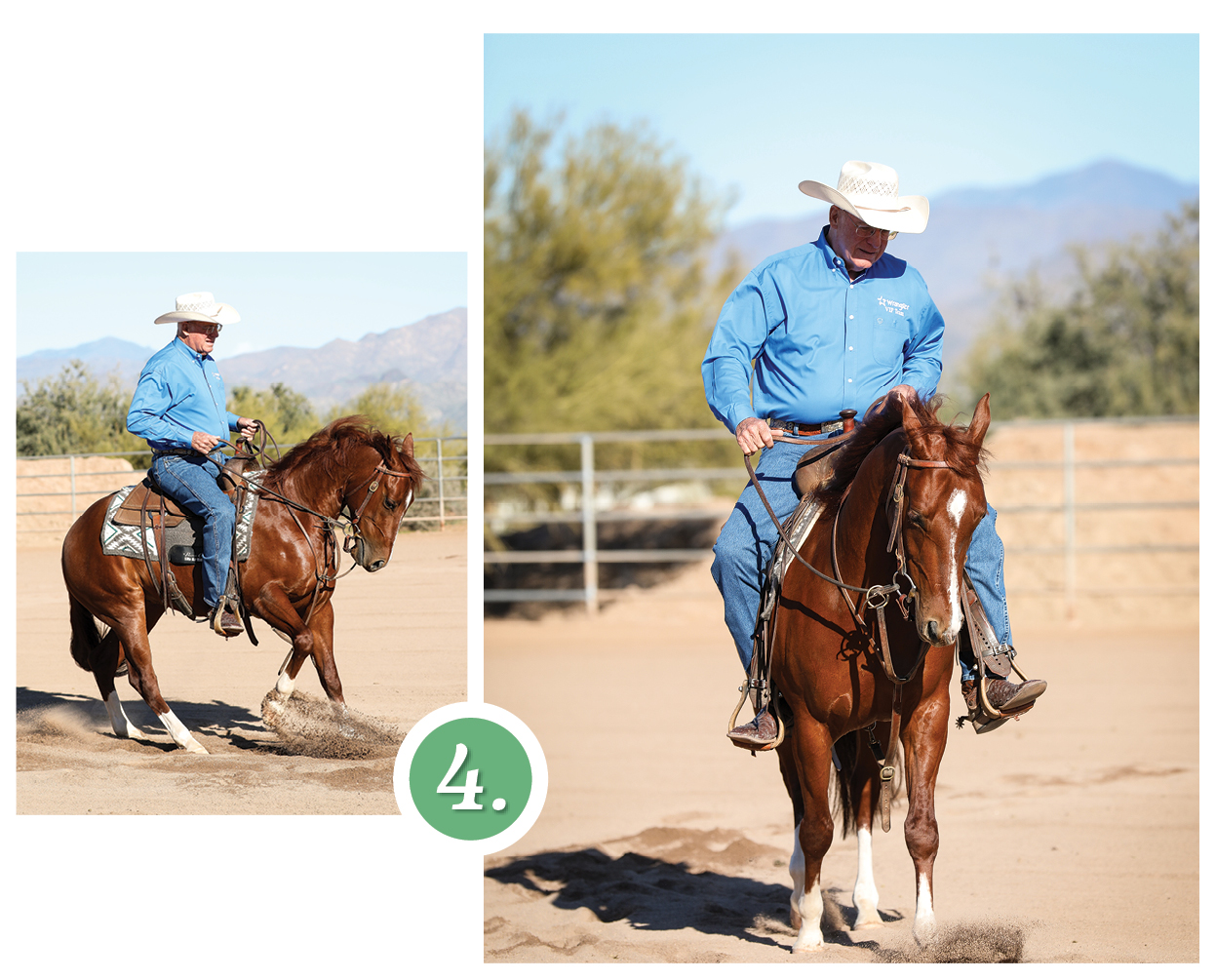
4. Back up.
Every horse should be able to back up. If you take a weanling, and you put a halter on him, he’s got to lead easy, turn easy, then back up. When you’re riding, it’s the same thing. Your horse needs to be able to back up when asked, according to what his job is. If he’s a trail horse, he should back cautiously and smoothly. If he’s a reining horse, he should move his feet and back up with his front freely moving with dispatch.
Make It Happen:
I like to ground drive my young horses, and teach them to get away from pressure by moving their feet backward. Before that, if a colt pushes into me and I push back on a halter or his nose, I teach him to move back. If you’ve done the groundwork, your horse should have a clue what backing up means.
When teaching a horse to back with a snaffle bit, I stand next to him by my stirrup, put one rein over the seat of the saddle and the other rein in my off hand. I rock the reins, putting incremental pressure on his mouth, until he learns to step back. When I’m riding, he understands he should back away from pressure when I do the same thing. As I progress, I can ride him up into a corner of the arena, then rock my reins back and forth. I don’t let them out of the corner except for a backward step. Then I ride some circles and push them into the corner again and do so until they understand the only way out of that corner is to take a couple steps backward.
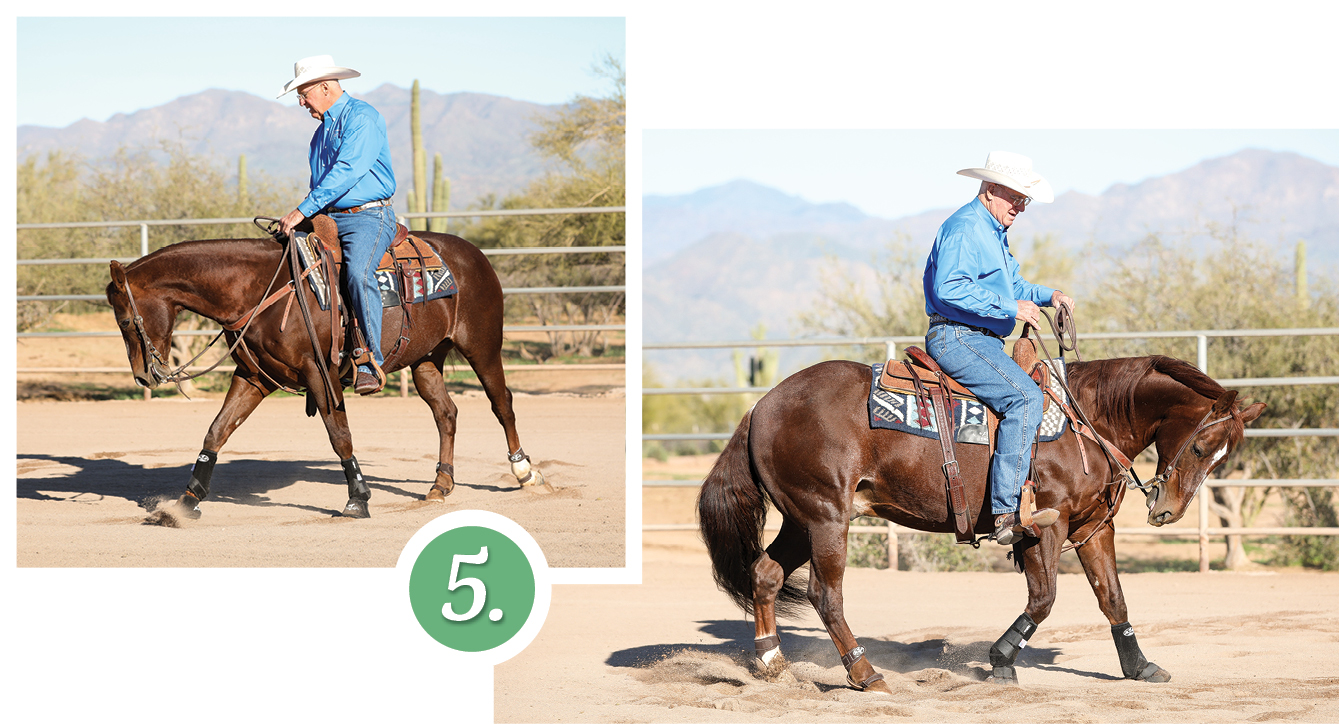
5. Collect.
A well-trained horse should collect, which is maybe the hardest manuever to fully understand as a rider. It means your horse is obedient to your legs and responds accordingly. He can move off your legs, two-track, and sidepass. He’s easy to align between your legs to go straight, and you can use your legs to help him round up his back and flex at the poll. You should be able to use your legs to control the flexibility of your horse’s head and neck. People think collection is frame. They see that tucked head and bowed neck, but that’s not what it is. It’s about your horse staying between your legs with softness and mobility. Flexing at the poll, not throwing his head, and using his neck and head in the manner that makes everything else function properly. Collection is how you sit and use your legs and hands. It’s taking your legs to push the back of your horse toward the front, rounding his back and getting him to move up under himself properly.
Make It Happen:
One of the keys to achieving collection is doing as little as you can to get your horse to react to the best of his knowledge. To start, you want to travel straight and let him learn to move off your leg as he goes forward. If you have resistance, put his head toward the fence as a barrier, take one leg away, and put the other leg on. This makes him move down the fence sideways in a sidepass maneuver, yielding from your outside leg without the forward motion being a problem. The key is to use as little pressure as you possibly can to give him a chance to respond properly. If the response isn’t understandable or he totally resists, you should incrementally increase the cue to get him to understand.
Where You’ll Run Into Trouble
People run into problems when they don’t connect what they do from the very beginning with their horse. Then the horse develops defenses. When that happens, the rider has to increase the pressure to break down those defenses. We’re trying to connect everything logically and understandably from the very beginning to avoid triggering a horse’s defense mechanisms. With my older horses that are well-trained, I think it and they do it. Maybe I close my legs, rock my legs, or cluck but I never connect a spur to go—that would only be a reprimand if the first cues were not effective. He goes forward happily. Once he gets going, there’s a release point. Whatever you do to your horse, it has to be logical.

